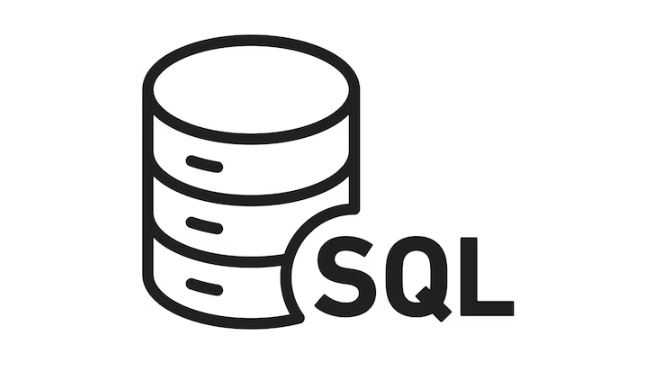To optimize SQL query performance, choose the right index type based on your use case. 1. B-Tree indexes are ideal for equality and range queries and sorting, especially with high-cardinality data. 2. Hash indexes provide fast equality lookups but do not support range queries and have limited database support. 3. Full-text indexes enable natural language searches on text columns, supported by MySQL, PostgreSQL, and others. 4. Composite indexes improve performance on multi-column queries, where column order matters. 5. Partial indexes reduce size and improve speed by indexing only a subset of the data based on a condition. Choosing wisely boosts performance significantly.

When it comes to optimizing query performance in SQL databases, indexes are one of the most powerful tools you have. But not all indexes are the same — choosing the right type for your use case makes a big difference.

1. B-Tree Indexes – The Default Workhorse
This is the most common and widely used index type across SQL databases like PostgreSQL, MySQL, and Oracle. B-Tree (short for Balanced Tree) works great for equality and range queries.

- If you're filtering with conditions like
WHERE id = 5orWHERE created_at BETWEEN '2023-01-01' AND '2023-01-31', a B-Tree index will help. - It’s also useful for sorting operations (
ORDER BY) when the column is indexed.
When to use:
- You’re doing lookups on exact values or ranges
- Your data has high cardinality (like unique IDs)
- You need support for both ascending and descending order scans
Most databases automatically create a B-Tree index when you define a primary key or a unique constraint.

2. Hash Indexes – Fast Lookups, Limited Use
Hash indexes are optimized for equality comparisons only. They use a hash table structure, so they’re super fast when you want to check something like WHERE email = 'user@example.com'.
But here's the catch:
- They don’t work well for range queries (
WHERE age > 30) - Not all databases support them by default (PostgreSQL supports them, but doesn’t recommend them for general use due to limited features)
In MySQL, memory-based hash indexes are used for MEMORY tables, while InnoDB uses an adaptive hash index internally.
3. Full-Text Indexes – Searching Through Text
If you're searching within text columns (like article content or product descriptions), full-text indexes are your go-to. They allow for natural language searches and can handle word stemming and ranking.
For example:
SELECT * FROM articles WHERE MATCH(content) AGAINST('database optimization');Supported by:
- MySQL (with MyISAM and InnoDB engines)
- PostgreSQL (through
tsvector) - SQL Server and Oracle have their own implementations too
These indexes are not for simple LIKE statements. If you're using LIKE '%search%', you won't get the benefits of a full-text index.
4. Composite Indexes – When Queries Use Multiple Columns
Sometimes your queries filter on more than one column, like WHERE user_id = 123 AND status = 'active'. That’s where composite indexes come in — they index multiple columns together.
A few things to keep in mind:
- The order of columns in the index matters
- An index on
(user_id, status)helps queries that use both, or justuser_id, but not queries that only usestatus - Composite indexes take up more space and can slow down write operations
They’re especially helpful in JOINs or complex WHERE clauses involving multiple fields.
5. Partial Indexes – Index Only What You Need
Also known as filtered indexes (in SQL Server), partial indexes let you index a subset of data based on a condition. For example:
CREATE INDEX idx_active_users ON users(id) WHERE active = true;
This keeps the index smaller and faster, which is perfect when you frequently query only a small portion of the table.
Useful in situations like:
- Only indexing recent records (
WHERE created_at > NOW() - INTERVAL '7 days') - Indexing non-null values (
WHERE column IS NOT NULL)
There are also more specialized types like GiST, SP-GiST, GIN in PostgreSQL for full-text search or JSON data, and spatial indexes for geospatial data types.
So, when picking an index type, think about what kind of queries you run most often, how selective the data is, and whether you're dealing with single or multiple columns. Choosing wisely can save you a lot of time — literally.
That’s about it — not rocket science, but easy to overlook if you’re not paying attention.
The above is the detailed content of Various Types of Indexes Available in SQL Databases.. For more information, please follow other related articles on the PHP Chinese website!

Hot AI Tools

Undress AI Tool
Undress images for free

Undresser.AI Undress
AI-powered app for creating realistic nude photos

AI Clothes Remover
Online AI tool for removing clothes from photos.

Clothoff.io
AI clothes remover

Video Face Swap
Swap faces in any video effortlessly with our completely free AI face swap tool!

Hot Article

Hot Tools

Notepad++7.3.1
Easy-to-use and free code editor

SublimeText3 Chinese version
Chinese version, very easy to use

Zend Studio 13.0.1
Powerful PHP integrated development environment

Dreamweaver CS6
Visual web development tools

SublimeText3 Mac version
God-level code editing software (SublimeText3)

Hot Topics
 OLTP vs OLAP: What Are the Key Differences and When to Use Which?
Jun 20, 2025 am 12:03 AM
OLTP vs OLAP: What Are the Key Differences and When to Use Which?
Jun 20, 2025 am 12:03 AM
OLTPisusedforreal-timetransactionprocessing,highconcurrency,anddataintegrity,whileOLAPisusedfordataanalysis,reporting,anddecision-making.1)UseOLTPforapplicationslikebankingsystems,e-commerceplatforms,andCRMsystemsthatrequirequickandaccuratetransactio
 How Do You Duplicate a Table's Structure But Not Its Contents?
Jun 19, 2025 am 12:12 AM
How Do You Duplicate a Table's Structure But Not Its Contents?
Jun 19, 2025 am 12:12 AM
Toduplicateatable'sstructurewithoutcopyingitscontentsinSQL,use"CREATETABLEnew_tableLIKEoriginal_table;"forMySQLandPostgreSQL,or"CREATETABLEnew_tableASSELECT*FROMoriginal_tableWHERE1=2;"forOracle.1)Manuallyaddforeignkeyconstraintsp
 What Are the Best Practices for Using Pattern Matching in SQL Queries?
Jun 21, 2025 am 12:17 AM
What Are the Best Practices for Using Pattern Matching in SQL Queries?
Jun 21, 2025 am 12:17 AM
To improve pattern matching techniques in SQL, the following best practices should be followed: 1. Avoid excessive use of wildcards, especially pre-wildcards, in LIKE or ILIKE, to improve query efficiency. 2. Use ILIKE to conduct case-insensitive searches to improve user experience, but pay attention to its performance impact. 3. Avoid using pattern matching when not needed, and give priority to using the = operator for exact matching. 4. Use regular expressions with caution, as they are powerful but may affect performance. 5. Consider indexes, schema specificity, testing and performance analysis, as well as alternative methods such as full-text search. These practices help to find a balance between flexibility and performance, optimizing SQL queries.
 How to use IF/ELSE logic in a SQL SELECT statement?
Jul 02, 2025 am 01:25 AM
How to use IF/ELSE logic in a SQL SELECT statement?
Jul 02, 2025 am 01:25 AM
IF/ELSE logic is mainly implemented in SQL's SELECT statements. 1. The CASEWHEN structure can return different values ??according to the conditions, such as marking Low/Medium/High according to the salary interval; 2. MySQL provides the IF() function for simple choice of two to judge, such as whether the mark meets the bonus qualification; 3. CASE can combine Boolean expressions to process multiple condition combinations, such as judging the "high-salary and young" employee category; overall, CASE is more flexible and suitable for complex logic, while IF is suitable for simplified writing.
 How to get the current date and time in SQL?
Jul 02, 2025 am 01:16 AM
How to get the current date and time in SQL?
Jul 02, 2025 am 01:16 AM
The method of obtaining the current date and time in SQL varies from database system. The common methods are as follows: 1. MySQL and MariaDB use NOW() or CURRENT_TIMESTAMP, which can be used to query, insert and set default values; 2. PostgreSQL uses NOW(), which can also use CURRENT_TIMESTAMP or type conversion to remove time zones; 3. SQLServer uses GETDATE() or SYSDATETIME(), which supports insert and default value settings; 4. Oracle uses SYSDATE or SYSTIMESTAMP, and pay attention to date format conversion. Mastering these functions allows you to flexibly process time correlations in different databases
 What is the purpose of the DISTINCT keyword in a SQL query?
Jul 02, 2025 am 01:25 AM
What is the purpose of the DISTINCT keyword in a SQL query?
Jul 02, 2025 am 01:25 AM
The DISTINCT keyword is used in SQL to remove duplicate rows in query results. Its core function is to ensure that each row of data returned is unique and is suitable for obtaining a list of unique values ??for a single column or multiple columns, such as department, status or name. When using it, please note that DISTINCT acts on the entire row rather than a single column, and when used in combination with multiple columns, it returns a unique combination of all columns. The basic syntax is SELECTDISTINCTcolumn_nameFROMtable_name, which can be applied to single column or multiple column queries. Pay attention to its performance impact when using it, especially on large data sets that require sorting or hashing operations. Common misunderstandings include the mistaken belief that DISTINCT is only used for single columns and abused in scenarios where there is no need to deduplicate D
 How to create a temporary table in SQL?
Jul 02, 2025 am 01:21 AM
How to create a temporary table in SQL?
Jul 02, 2025 am 01:21 AM
Create temporary tables in SQL for storing intermediate result sets. The basic method is to use the CREATETEMPORARYTABLE statement. There are differences in details in different database systems; 1. Basic syntax: Most databases use CREATETEMPORARYTABLEtemp_table (field definition), while SQLServer uses # to represent temporary tables; 2. Generate temporary tables from existing data: structures and data can be copied directly through CREATETEMPORARYTABLEAS or SELECTINTO; 3. Notes include the scope of action is limited to the current session, rename processing mechanism, performance overhead and behavior differences in transactions. At the same time, indexes can be added to temporary tables to optimize
 What is the difference between WHERE and HAVING clauses in SQL?
Jul 03, 2025 am 01:58 AM
What is the difference between WHERE and HAVING clauses in SQL?
Jul 03, 2025 am 01:58 AM
The main difference between WHERE and HAVING is the filtering timing: 1. WHERE filters rows before grouping, acting on the original data, and cannot use the aggregate function; 2. HAVING filters the results after grouping, and acting on the aggregated data, and can use the aggregate function. For example, when using WHERE to screen high-paying employees in the query, then group statistics, and then use HAVING to screen departments with an average salary of more than 60,000, the order of the two cannot be changed. WHERE always executes first to ensure that only rows that meet the conditions participate in the grouping, and HAVING further filters the final output based on the grouping results.






